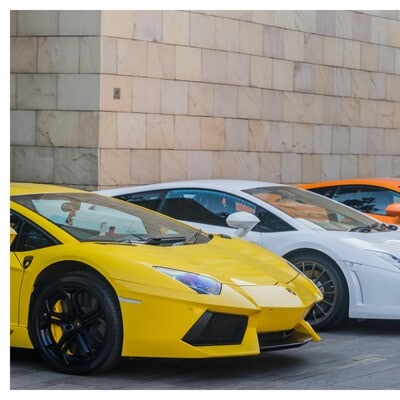As the purchasing power of high net worth individuals (HNWIs) in India continues to grow, luxury automotive brands are rapidly expanding their presence across the country, particularly in Tier II and Tier III cities.
Mercedes-Benz India has recently announced an investment of Rs 150 crore to convert 25 of its outlets into luxury showrooms. These redesigned showrooms will offer a more relaxed and immersive experience for customers, reflecting the brand’s commitment to cater to the changing needs of India’s affluent consumers.
Last year, British luxury carmaker Aston Martin announced plans to open a new dealership in South India this year or next, aiming to double its sales volume in the Indian market. The company currently operates a single dealership in Delhi under the name Select Cars.
The decision to expand into South India is a strategic move, driven by the region’s rapid growth in the sports car segment – Bangalore alone witnessed a 35 per cent rise in the ultra-luxury car market last year.
Lamborghini, another leading luxury car brand, is also looking at expanding in India. The company is considering opening new dealerships in smaller cities in eastern and southern India to reach a wider customer base. According to Francesco Scardaoni, head of Lamborghini in Asia-Pacific, the brand has added 20% first-time buyers to its customer base, with a significant portion moving from the Lamborghini Urus SUV to other models. Despite the fact that all stocks have been sold out across all categories so far this year, Lamborghini is still accepting reservations, with a waiting list.
Audi India has grown from seven Audi Approved:plus facilities in 2020 to 27 facilities in 2024, taking the total number of touchpoints to over 64. This expansion is driven by Audi’s aim to cater to a broader customer base and meet the aspirations of its discerning clientele, particularly in regions where demand for luxury cars is on the rise.
Industry experts attribute this growth to several factors, including a growing population of high-income earners, a younger demographic of luxury car buyers, and favorable tax benefits. The average age of luxury car owners has dropped to about 40 years, and an increasing number of professionals and salaried employees have entered the segment.
This trend is being driven by rising brand awareness, premiumisation of the automotive sector and favourable tax benefits, making India an increasingly attractive market for global luxury carmakers.
The luxury car segment recorded its highest-ever volume of 45,000 units in calendar year 2023, marking a 20 percent increase and nearly doubling the industry growth rate.
Commenting on this, Rohan Kanwar Gupta, Vice President and Sector Head, Corporate Ratings, ICRA, said, “Healthy demand growth in the luxury automobile market is expected to continue over the medium term, aided by rising brand awareness and low penetration (substantially low compared to major economies – US, China, Germany), providing long-term growth visibility. As income levels continue to improve, this segment is expected to continue to outperform the underlying PV industry, thereby incentivizing global OEMs to sharpen their focus on the Indian market.”
There has also been a gradual change in the profile of customers buying luxury cars: the average age of luxury car owners has dropped to around 40 years and the proportion of the professional/salaried segment buying such cars is increasing.
Anurag Singh, managing director at Primus Partners, attributes the rise in luxury car sales to several factors. He singles out the growing number of high-net-worth individuals as the main driver, with younger and wealthier consumers showing a particularly strong inclination towards luxury vehicles. In addition, tax benefits, both for companies through depreciation and for individuals through company car leasing, have contributed significantly to the market growth.
The growth in demand for luxury vehicles in India is not limited to metros. The rise of startups and a thriving entrepreneurial culture in second- and third-tier cities are contributing to the rise in high-end car sales. As more people become financially successful, there is a noticeable shift towards ownership of luxury vehicles that offer both status and superior driving experiences.
Sanket Kelaskar, an analyst at Ashika Group, offers a broader perspective by linking the rise of luxury cars to a broader trend of premiumisation across the Indian automotive sector. Rising disposable incomes, evolving consumer preferences (such as the shift towards SUVs) and the integration of advanced technology are key factors driving this trend.
The growing trend towards premiumisation in the Indian automobile sector coupled with factors such as rising disposable income, evolving consumer preferences towards SUVs and introduction of high-tech models with advanced digital features is further driving the demand for luxury cars.
First published: August 18, 2024 | 14:34 IS
Disclaimer:
The information contained in this post is for general information purposes only. We make no representations or warranties of any kind, express or implied, about the completeness, accuracy, reliability, suitability or availability with respect to the website or the information, products, services, or related graphics contained on the post for any purpose.
We respect the intellectual property rights of content creators. If you are the owner of any material featured on our website and have concerns about its use, please contact us. We are committed to addressing any copyright issues promptly and will remove any material within 2 days of receiving a request from the rightful owner.

